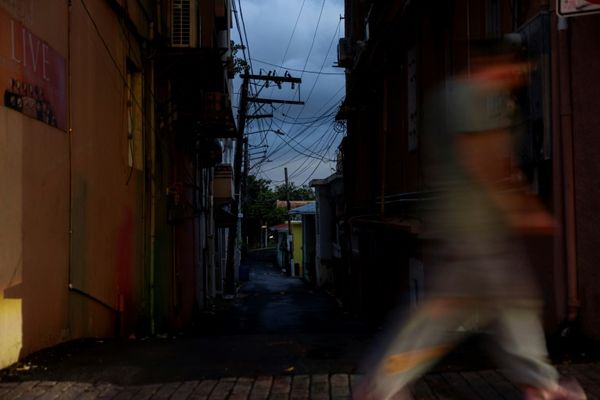An unassuming yet "extraordinary" 1970s farmhouse in Kempsey on the NSW Mid North Coast has been heritage-listed for its significance as an early example of an "environmentally responsive" building.
Known as the Marie Short Farmhouse, it is the second house designed by Sydney-based architect Glenn Murcutt to be added to the New South Wales Heritage Register.
"It's a building that's not screaming at you — it's a quiet building," Murcutt said.
"I'm much more interested in buildings that you would go past and you think, 'Oh maybe I should go back and look at that'."
To illustrate this, Murcutt recounted a conversation with one of his clients after they had visited the farmhouse.
The client said: "You know Glenn, you wouldn't buy it from the outside would you?"
To which Murcutt replied: "Would you eat a pineapple from the outside?"
"I made the point very simply that there is a function for a building's skin," he said.
He said the "modern building" had a longevity that had passed the test of time, which was vitally important in architecture.
"I think most would agree that a building designed in 1973, built in 1974, is in 2023 still a relevant design that belongs to a timelessness that doesn't speak of any particular century," he said.
"I'm just sitting down doing ordinary things extraordinarily well, that's what my aim is."
'It's absolutely about education'
Murcutt, one of Australia's most internationally renowned architects, says understanding the environment and landscape in which a building is to be located is crucial to good design.
And he believes children can be taught this from an early age — afterall, he credits a childhood spent absorbing such information for his revered, yet modest designs.
"In parts of Europe, like Finland, children are learning about design from primary school," he said.
"When I grew up we didn't even have art in my high school as a subject … but the reality is it's absolutely about education."
He said his design for the Marie Short Farmhouse was informed by understanding "rather intimately" the landscape in which the building was to be built.
"Understanding the water patterns, looking at the type of plants that tell something about the soil, the type of trees tells you about the sort of insects that are there … the animals that are there," he said.
"I knew that during the floods the reptiles would come up into the high land."
Crucially, he also knew about the principles of flight from his uncle, a World War II pilot, who had given him a book about it when he was 12.
"I knew how to structure wind to get positive pressure and negative pressure, which gives you a lift, which gives you clearance, so a suction out of the roof [of hot air], and so that created the curved roof," he said.
"These things are not about a wish and a desire to design something that is of the emotion.
"This is about logic, this is about rational thinking, that also by its nature is beautiful, it's poetic in itself."
The other residence designed by Murcutt, the Simpson-Lee House at Mt Wilson, which he designed in the late 1980s, was gazetted on the NSW Heritage Register last year.
A childhood of learning
Murcutt said he was "raised in a family that took the environment very seriously".
"For example, our pocket money came not through a right but through doing something we were not asked to do," he said.
"If we left a light on in our room … we were fined thrippence and that would go into a box."
His family were vegetarians — unless they were able to kill the animal whose meat they wanted to eat themselves, he said.
He and his brother learned a big lesson after they brought home about 90 fish.
"[My father] said, 'You two boys only will eat all of those fish until they're finished'.
"You take what you need only from the water, you do not take any more than you need."
Murcutt gained an understanding of materials and how to use them responsibly while working in his father's joinery shop from the age of about 12 to 19.
"That you don't waste, and when you cut something you make sure you double-check the dimension. You don't cut before you double-check so this is all about responsibility.
"It's entirely about responsibility."
While studying architecture at the Sydney Technical College, Murcutt, who was born in 1936, failed the unit on "sunshine and shade" and had to complete it again.
"So clearly failure is a very important learning process, because you really learn from it," he said.
"I learnt about the movement of the sun, I learnt about the movement of water and wind."
And now two of his modest, yet extraordinary designs, that embody his environmentally responsible architectural style, will be preserved for generations to come.







